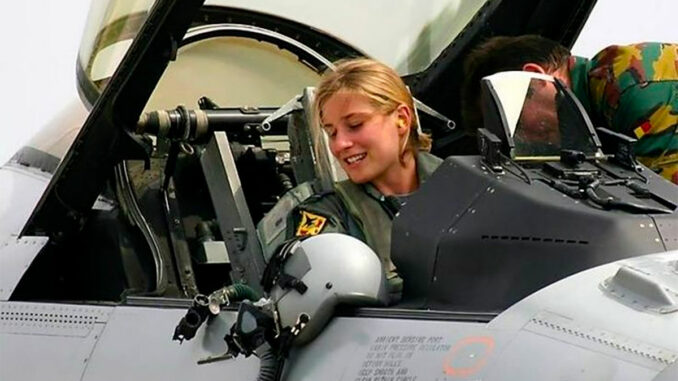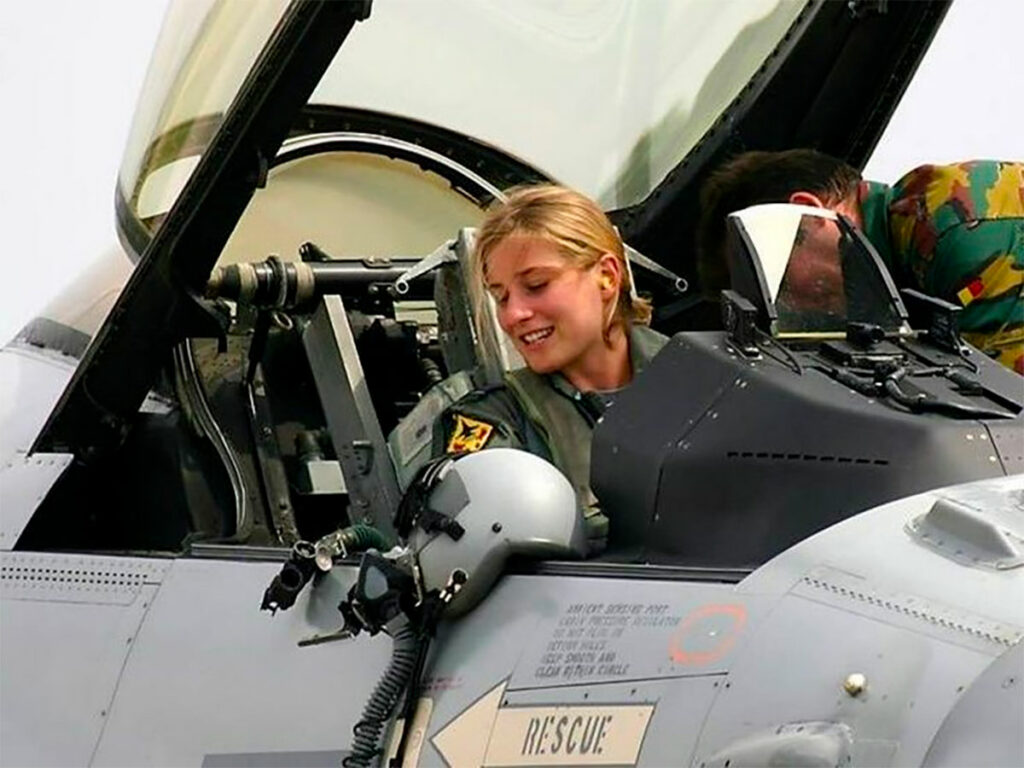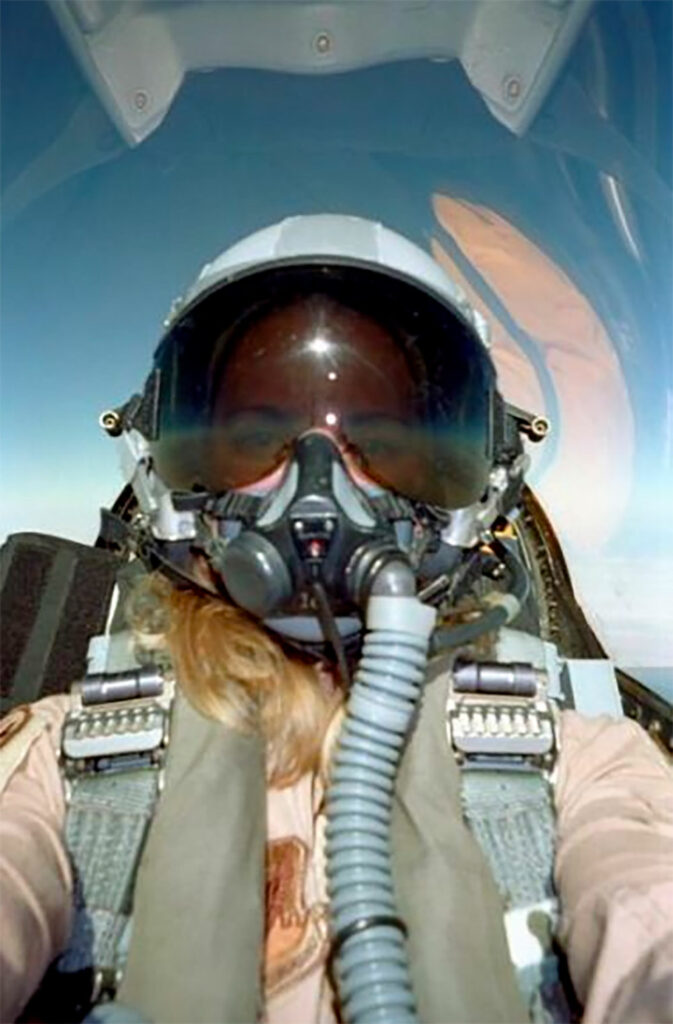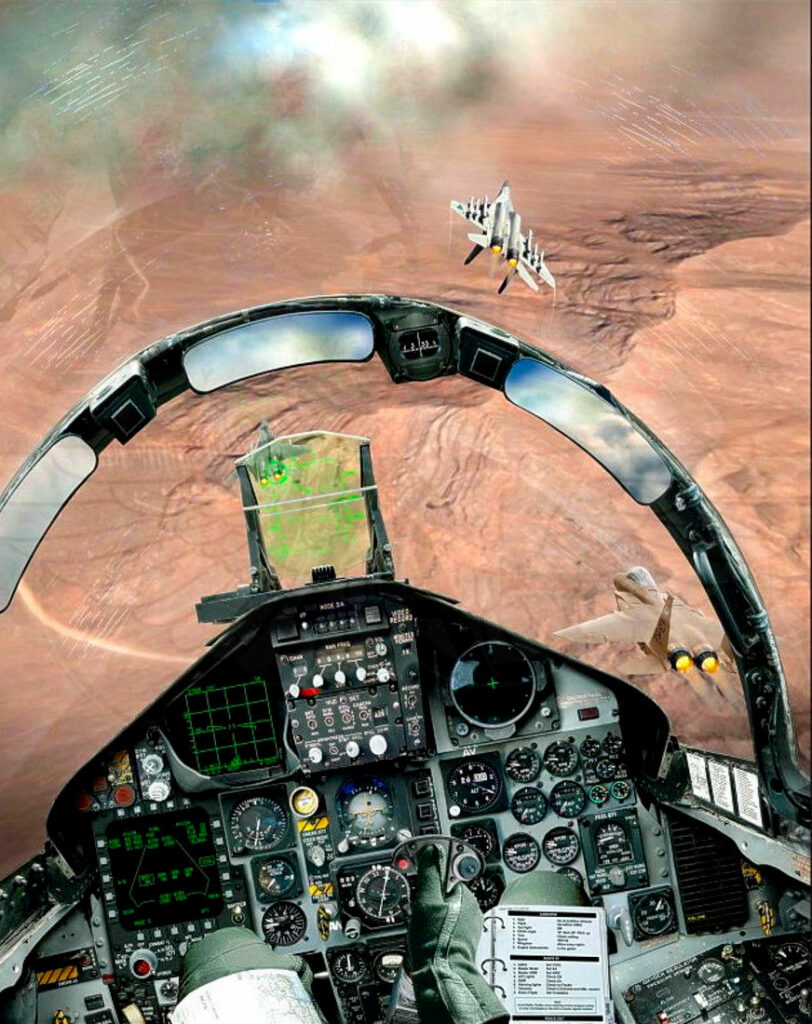
Discover how fighter pilots train for dogfighting against unconventional tactics.
Close-range aerial combat, or dogfighting, remains a complex challenge for fighter pilots, especially when facing opponents who use unconventional tactics. These tactics, which are often unpredictable, require specific training to prepare pilots for situations where traditional rules no longer apply. This article explores the training methods used to deal with these atypical scenarios.

Training fighter pilots to deal with unconventional tactics
For several decades, Western air forces have recognized the need for close combat (dogfighting) training that includes so-called unconventional tactics. These do not follow traditional maneuvering doctrines and may rely on behavioral disruptions, exploitation of weaknesses, or asymmetric use of technology. Fighter pilot training is therefore adapting to this reality through technical, human, and doctrinal means.
Simulated air combat exercises: the role of “aggressor” squadrons
In programs such as Red Flag (United States), Cobra Warrior (United Kingdom) and the TLP (Tactical Leadership Program) exercises in Spain, pilots train against specialized units playing the role of unconventional enemies. These units, known as aggressor squadrons, often fly modified or older aircraft (F-5, F-16, Alpha Jet) and use tactics that simulate those of non-NATO forces. These tactics include, for example, simultaneous low-altitude attacks, deliberately breaking radar locks, and exploiting missile blind spots. The aim is to force pilots to abandon their doctrinal reflexes and improvise. These engagements take place at subsonic or transonic speeds, between 500 and 1,000 km/h, with engagement distances often less than 2 km, making visual identification essential.
The use of advanced simulators: integration of human variables
Fifth-generation tactical simulators, such as those used in the F-35A and Rafale F4, can simulate adversaries reacting according to unpredictable algorithms. They also reproduce realistic physiological conditions (loss of bearings, sensory overload). Specific modules inject tactics inspired by the wars in Syria, Libya, and Ukraine, where pilots or drones use non-ballistic trajectories or signal jamming. In France, the Centre d’Expertise Aérienne Militaire (CEAM) integrates these scenarios into its operational preparation programs, allowing for up to 30 hours of simulated flight time per month per pilot.
Behavioral and doctrinal analysis of the enemy
The study of enemy tactics relies on the use of aerial intelligence, including analysis of videos of Russian Su-35, Chinese J-10, and exported MiG-29 fighter jets. Foreign doctrine operational manuals are analyzed and sometimes circumvented to detect areas of local initiative. For example, Syrian or Iranian pilots sometimes adopt maneuvers contrary to their original training in order to disrupt short-range engagements. The objective is to train pilots not to predict, but to recognize a tactical breakaway logic and apply an appropriate response without cognitive latency.
The challenges posed by unconventional tactics
Close combat against an opponent using unconventional tactics creates a highly unstable environment, where the fighter pilot’s experience is not always sufficient to provide an immediate response. These tactics aim to disrupt the opponent’s decision-making process through surprise, doctrinal circumvention, or cognitive overload. They often exploit areas of uncertainty and blind spots in warning systems or standard procedures.
Unpredictable maneuvers: breaking kinetic logic
An adversary trained not to follow conventional air combat logic will seek to provoke errors. Tactics may include deliberately engaging outside favorable zones, remaining in the field of view for extended periods instead of seeking evasion, or using abnormal flight paths—such as sudden rotations at very low speeds or interrupted vertical loops. In recent conflicts, some Syrian and Libyan pilots have adopted irrational tactical behavior, such as simulating loss of control to cause a lapse in vigilance. These maneuvers, often performed at speeds between 300 and 700 km/h, cause Western pilots to lose their tempo as they try to “read” the situation instead of reacting instinctively. Fighter pilot training must therefore include repeated exposure to this type of behavioral disruption in order to reset their response process.
Complex environments: geography, electronics, cognitive pressure
Unconventional tactics are frequently used in rugged or technically challenging geographical contexts. A pilot operating over a mountainous area at low altitude may find that their radar sensors are less effective. The opponent can then exploit the topography to conceal their movements. This was observed in simulations based on combat between Indian MiG-21s and Pakistani JF-17s in Kashmir. Added to this are active jamming, infrared decoys, and radar decoys, which aim to disrupt the pilot’s sensory reflexes. In a saturated environment, pilots must extract useful information within a few seconds, without relying solely on their onboard systems. Uncertainty then becomes a constant factor, which pilots learn to integrate through repeated exposure to deliberately chaotic scenarios.
Reducing the decision cycle: reflex versus reasoning
In close combat, the time available to identify, analyze, decide, and maneuver can fall below 3 to 5 seconds. When faced with conventional tactics, this time is often sufficient to apply a doctrinal response. This is no longer the case against an unconventional adversary. For example, a pilot performing a Cobra maneuver (sudden loss of speed with extreme nose-up) on a Su-27 can force the opponent to overshoot, even if the maneuver compromises his own chances of survival. Western fighter pilots must therefore learn to react to “counterintuitive” actions without freezing. This requires training pilots to operate in a reflexive mode, taking into account real physiological stress: G-force, hypoxia, disorientation. The quality of fighter pilot training depends on the ability to create cognitively hostile but controlled environments that require quick but informed decision-making. The pilots of the USAF’s 64th Aggressor Squadron teach this: “A good reflex is sometimes better than structured reasoning.”


Prospects for the evolution of training
Faced with the emergence of irregular air doctrines, the exploitation of hybrid warfare, and the emergence of autonomous platforms, fighter pilot training must evolve rapidly. It is no longer just a matter of perfecting flight or shooting skills, but of anticipating behaviors that do not follow any doctrinal logic. Three main areas are shaping this change: the integration of artificial intelligence, the structuring of targeted programs, and international sharing.
The integration of artificial intelligence into tactical simulation
Since 2023, the US Air Force has been successfully testing simulators in which the opponent is piloted by an artificial intelligence (AI) agent. These AIs learn in real time to modify their trajectories, adopt erratic behavior, and test weak areas in human tactics. The HERON algorithm, for example, was able to beat a human pilot in five consecutive dogfights by changing its engagement strategy between each round. By simulating non-linear maneuvers, AI can reproduce breaks in logic that a human instructor would not voluntarily execute for fear of exceeding safety parameters.
The use of these AIs in Dome Full Mission (360°) simulators forces pilots to operate in a destabilized OODA (Observe–Orient–Decide–Act) loop. The goal is no longer to react to a known scenario, but to improvise in an unstable environment, sometimes even with incomplete data. Ultimately, these simulators could also be integrated into augmented reality (AR) headsets in real flight, to superimpose a phantom opponent during training missions.
The development of specialized programs in cognitive warfare
Cognitive warfare is becoming a central element of air combat. Some training programs, such as those developed at CEAM in Mont-de-Marsan and the 56th Fighter Wing at Luke AFB, now include modules on decision-making stress management, behavioral analysis, and combat in jammed or corrupted environments.
These training courses are based on intensive simulations where information is deliberately ambiguous or inconsistent. The aim is to train pilots to “decide in the fog” without waiting for technical confirmation. Exercises involving sensory overload, cognitive desynchronization, and reverse engagement are used. The goal is to develop a reflexive ability in the pilot based on integrated experiences, not on procedure.
International collaboration as a doctrinal lever
No pilot can effectively train for all variants of unconventional close combat without being confronted with diversity. This is why air forces are increasing the number of joint exercises. In 2022, the Iniochos exercise in Greece brought together Israeli, French, Italian, and Emirati pilots in scenarios where each army imposed its own rules of engagement, creating asymmetrical confrontations.
These exercises expose pilots to combat styles that are outside their national logic. A Greek pilot flying a Mirage 2000 must learn to deal with an opponent who does not engage in BVR (Beyond Visual Range) but deliberately seeks visual fusion. Conversely, American crews sometimes have to face approaches inspired by Soviet radar saturation doctrines.
The pooling of RETEX (returns on experience) makes it possible to structure a shared database of non-standard tactics. The medium-term objective is to create an interoperable training base where each army contributes to the scenarios used elsewhere. Unconventional combat then becomes a global subject of study, rather than a local anomaly.
Training fighter pilots to deal with unconventional tactics is a complex and constantly evolving process. It requires a combination of advanced technologies, in-depth analysis, and international collaboration. When facing unpredictable adversaries, rigorous preparation and adaptability on the part of pilots are essential to ensuring air superiority.
War Wings Daily is an independant magazine.